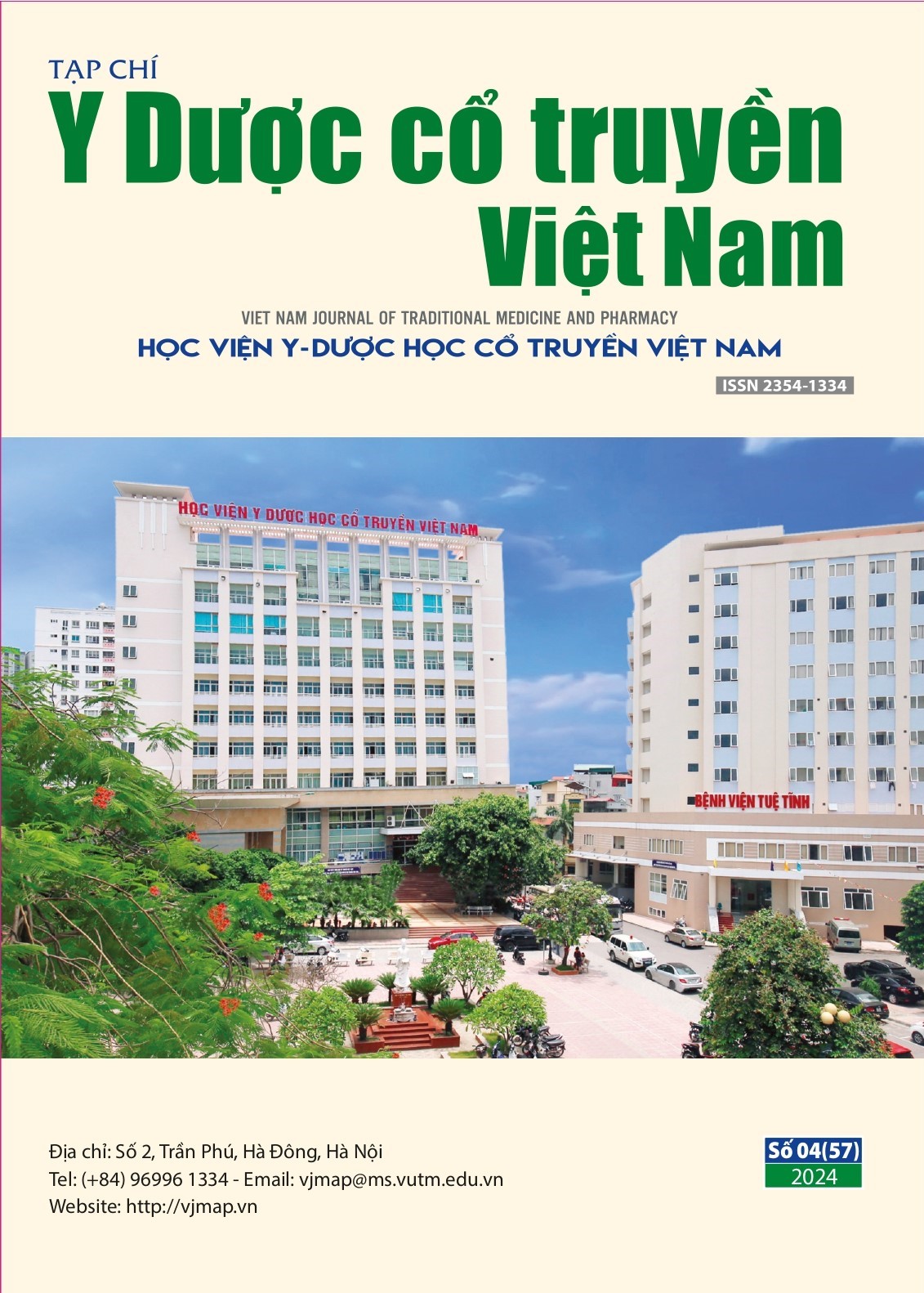Evaluating the anti-obesity effect of hot chili nanogel in mice
Main Article Content
Abstract
Objectives: To evaluate the fat-dissolving and anti-obesity effect of topical chili nanogel of Capsicum annuum L in mice
Subjects and methods: This was an animal testing with control group. Swiss mice were obesity induced by a high-fat diet combined with oral olanzapine at a dose of 3 mg/kg continuously for 8 weeks. At the same time, all mice were randomly divided into 3 groups, including a biological control group, a model control group, and chili nanogel treatment group (with 0.15% of capsaicin) on the abdominal skin shaved continuously for 8 weeks.
Results: The chili nanogel of Capsicum annuum L applied to mice skin continously for 8 weeks could reduce weight gain and decrease BMI as well as reduced triglyceride levels in obese mice (p< 0.05), and tend to reduce visceral fat mass (p>0.05) in obese mice compared to the untreated model group.
Conclusions: The topical chili nanogel of Capsicum annuum L had an anti-obesity effect and improved lipid metabolic disorder in experimental animals.
Article Details
Keywords
Chili, pepper, capsaicin, Capsicum annuum L., obese mice
References
2. Chakrabarty, S., A.K.M.M. Islam, and A.K.M.A. Islam. Nutritional Benefits and Pharmaceutical Potentialities of Chili: A Review. Fundamental and Applied Agriculture, 2017, 2, pp. 2518-2021.
3. Shertzer, H. G., Kendig, E. L., Nasrallah, H. A., et al. Protection from olanzapine-induced metabolic toxicity in mice by acetaminophen and tetrahydroindenoindole. International journal of obesity, 2010, 34(6), pp.970-979.
4. Phạm Thị Vân Anh, Lương Xuân Hưng, Phạm Quốc Sự và cộng sự. Tác dụng giảm cân của Mubella trên chuột nhắt trắng gây béo phì bằng chế độ ăn giàu chất béo và Olanzapin. Tạp chí Nghiên cứu Y học, 2023, 169(8), pp. 260-270.
5. Dludla, P. V., Cirilli, I., Marcheggiani, F., et al. Bioactive Properties, Bioavailability Profiles, and Clinical Evidence of the Potential Benefits of Black Pepper (Piper nigrum) and Red Pepper (Capsicum annum) against Diverse Metabolic Complications. Molecules, 2023, 28(18).
6. Naseem Zahra, N.Z., Alim-un-Nisa, Imran Kalim et al. Estimation of capsaicin in different chilli varieties using different extraction techniques and HPLC method: a review. PAK. J. FOOD SCI., 2016, 26(1), pp.54-60.
7. Kang, J. H., Tsuyoshi, G., Han, I. S. et al. Dietary capsaicin reduces obesity-induced insulin resistance and hepatic steatosis in obese mice fed a high-fat diet. Obesity (Silver Spring), 2010, 18(4), pp. 780-787.
8. Lee, G. R., Shin, M. K., Yoon, D. J., et al. Topical application of capsaicin reduces visceral adipose fat by affecting adipokine levels in high-fat diet-induced obese mice. Obesity (Silver Spring), 2013, 21(1): pp.115-122.
9. Berkoz, M., Yildirim, M., Arvas, G., et al. Effect of capsaicin on transcription factors in 3T3-L1 cell line. Eastern Journal of Medicine, 2015, 20(1), pp.34.
10. Felix W Leung. Capsaicin as an anti-obesity drug. Capsaicin as a therapeutic molecule, 2014, pp.171-179.

